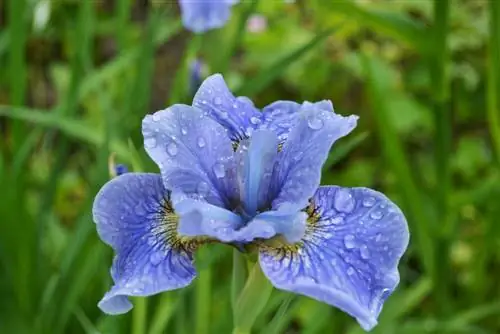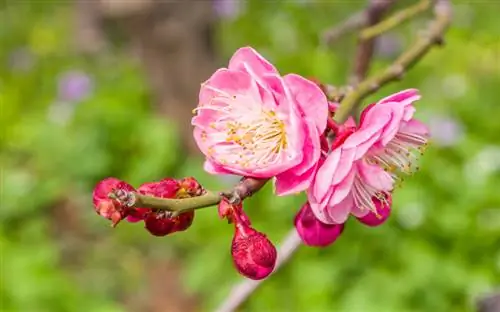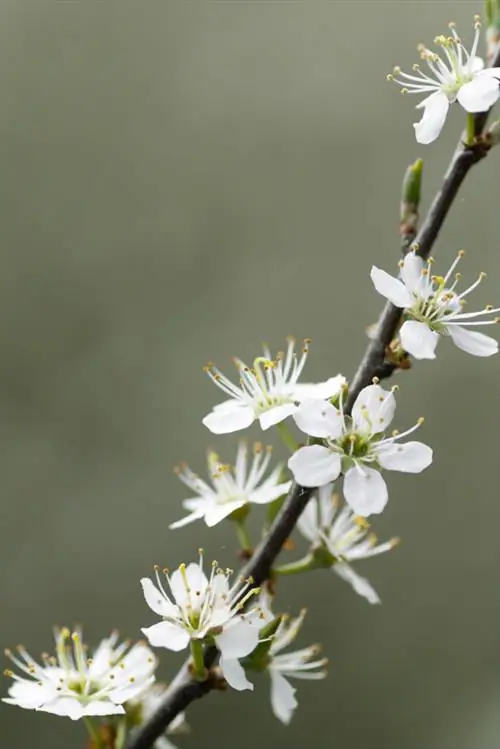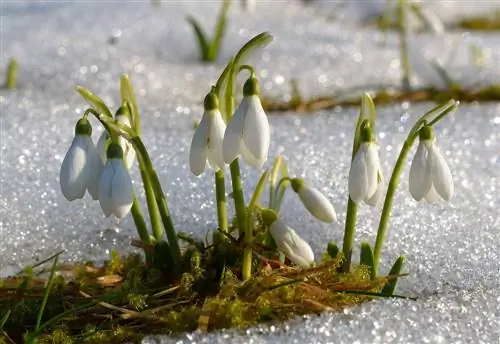- Author admin [email protected].
- Public 2023-12-16 16:46.
- Last modified 2025-01-23 11:22.
The “Daughters of the Rainbow”, as the irises are also called, cover the entire color range of flowering plants. New varieties enrich the gardens with ever new, interesting color combinations. We would like to introduce you to the attractive perennial in more detail and give you valuable planting and care tips.

What are the special features of the iris as plant of the month?
The iris, also known as the “Daughters of the Rainbow,” is an attractive perennial with a variety of flower colors. It prefers loose, water-permeable substrate and should be planted after flowering. The plant is hardy, robust and ideal for gardens.
Plant profile:
- Botanical name: Iris
- Genus: Irises
- Family: Iridaceae (bot. Iridaceae)
- Growth height: 50 to 120 centimeters
- Growth form: perennial with rhizome
- Main flowering period: July to October
- Leaf color: Strong green
- Leaf shape: Grassy, entire edge
- Flower color: purple, blue, white, yellow, orange, red, pink, multicolored
- Flower shape: Single flower, consisting of three hanging (beard or comb) and three upright leaves (thorn leaves)
Origin
In nature there are around 200 different species of irises, which thrive wild predominantly in the temperate zones of the northern hemisphere. The wild forms are very similar in their flower shape, but differ in terms of height, flowering period and location requirements.
Planting and care
Irises prefer a loose, water-permeable and rather dry substrate. A nutrient-rich, not overly compacted clay soil is ideal. The attractive perennials do not tolerate acidic or wet substrates.
Plant the irises preferably after they have bloomed. Always place the rhizomes horizontally and not too deep in the ground and cover them with a centimeter of soil. The planting distance should be at least 40 centimeters.
Care tips
Irises are relatively drought tolerant and only need to be watered when the soil is very dry. Remove the dead flowers from the twice-flowering specimens so that the perennial does not put unnecessary energy into seed formation.
Fertilization is carried out in spring with mature compost. Avoid over-fertilization as the iris is sensitive to s alt. If fertilization is excessive, the rhizomes begin to rot.
Propagation
So that irises do not lose their ability to bloom, the clumps should be divided regularly. Proceed as follows:
- In August, after flowering, remove dense rhizomes from the soil.
- Break the shoot and root into pieces approximately ten centimeters long.
- Short the leaves to ten centimeters.
- Replace rhizome parts with sufficient space.
Diseases and pests:
The hardy irises are extremely robust and are only attacked by diseases or pests if they do not have an optimal location.
- In wet weather conditions there is a risk of root rot. Dig up the rhizome as quickly as possible, remove any soft spots and place the root in a place where water can drain easily. A drainage layer in the planting hole is recommended.
- You should cut off leaves affected by leaf spots and dispose of the leaves in the household waste.
Tip
Irises are the plant of the messenger of the gods, Iris. In Greek mythology, they had the task of guiding the souls of the deceased along the rainbow into the realm of eternal peace. That's why graves are still decorated with white or blue irises today.






